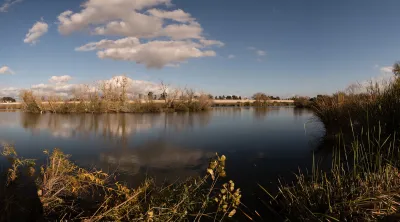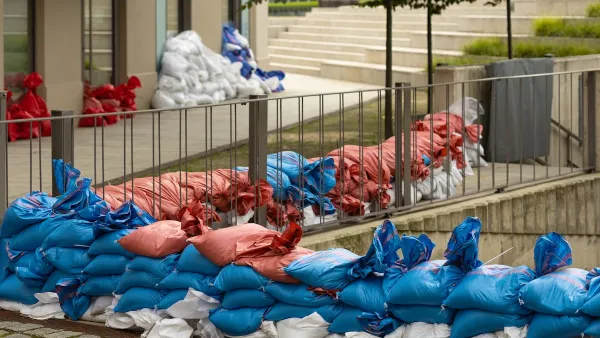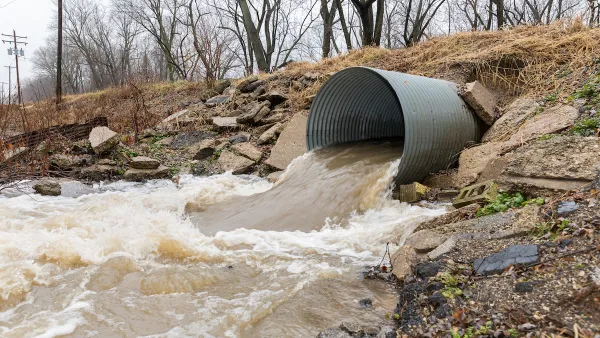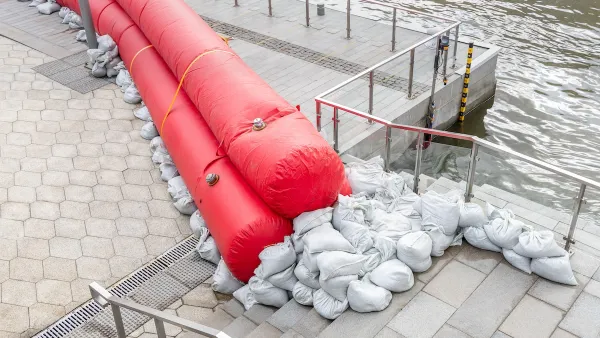The city is turning away from stormwater management practices that shuttle water to the ocean, building infrastructure that collects and directs it underground instead.

When Los Angeles received 9 inches of rain in three days this month, some neighborhoods experienced destructive flooding and mudslides, garnering much of the media’s attention. But, as Matt Simon points out in an article in Wired, the city also collected 8.6 billion gallons of stormwater, enough to cover the needs of over 100,000 households for a full year.
This is thanks to new green infrastructure designed to be ‘spongy’ rather than direct stormwater to the ocean, as it did in the past. Los Angeles has built new dams and spreading grounds that capture water and direct it into underground aquifers for future use.
The trick to making a city more absorbent is to add more gardens and other green spaces that allow water to percolate into underlying aquifers—porous subterranean materials that can hold water—which a city can then draw from in times of need. Engineers are also greening up medians and roadside areas to soak up the water that’d normally rush off streets, into sewers, and eventually out to sea.
In addition to helping to refill local aquifers, the new green spaces can improve the mental and physical health of residents. “Plants here also “sweat,” cooling the area and beating back the urban heat island effect—the tendency for concrete to absorb solar energy and slowly release it at night.”
FULL STORY: Los Angeles Just Proved How Spongy a City Can Be

National Parks Layoffs Will Cause Communities to Lose Billions
Thousands of essential park workers were laid off this week, just before the busy spring break season.

Retro-silient?: America’s First “Eco-burb,” The Woodlands Turns 50
A master-planned community north of Houston offers lessons on green infrastructure and resilient design, but falls short of its founder’s lofty affordability and walkability goals.

Delivering for America Plan Will Downgrade Mail Service in at Least 49.5 Percent of Zip Codes
Republican and Democrat lawmakers criticize the plan for its disproportionate negative impact on rural communities.

Test News Post 1
This is a summary

Test News Headline 46
Test for the image on the front page.

Balancing Bombs and Butterflies: How the National Guard Protects a Rare Species
The National Guard at Fort Indiantown Gap uses GIS technology and land management strategies to balance military training with conservation efforts, ensuring the survival of the rare eastern regal fritillary butterfly.
Urban Design for Planners 1: Software Tools
This six-course series explores essential urban design concepts using open source software and equips planners with the tools they need to participate fully in the urban design process.
Planning for Universal Design
Learn the tools for implementing Universal Design in planning regulations.
EMC Planning Group, Inc.
Planetizen
Planetizen
Mpact (formerly Rail~Volution)
Great Falls Development Authority, Inc.
HUDs Office of Policy Development and Research
NYU Wagner Graduate School of Public Service





























